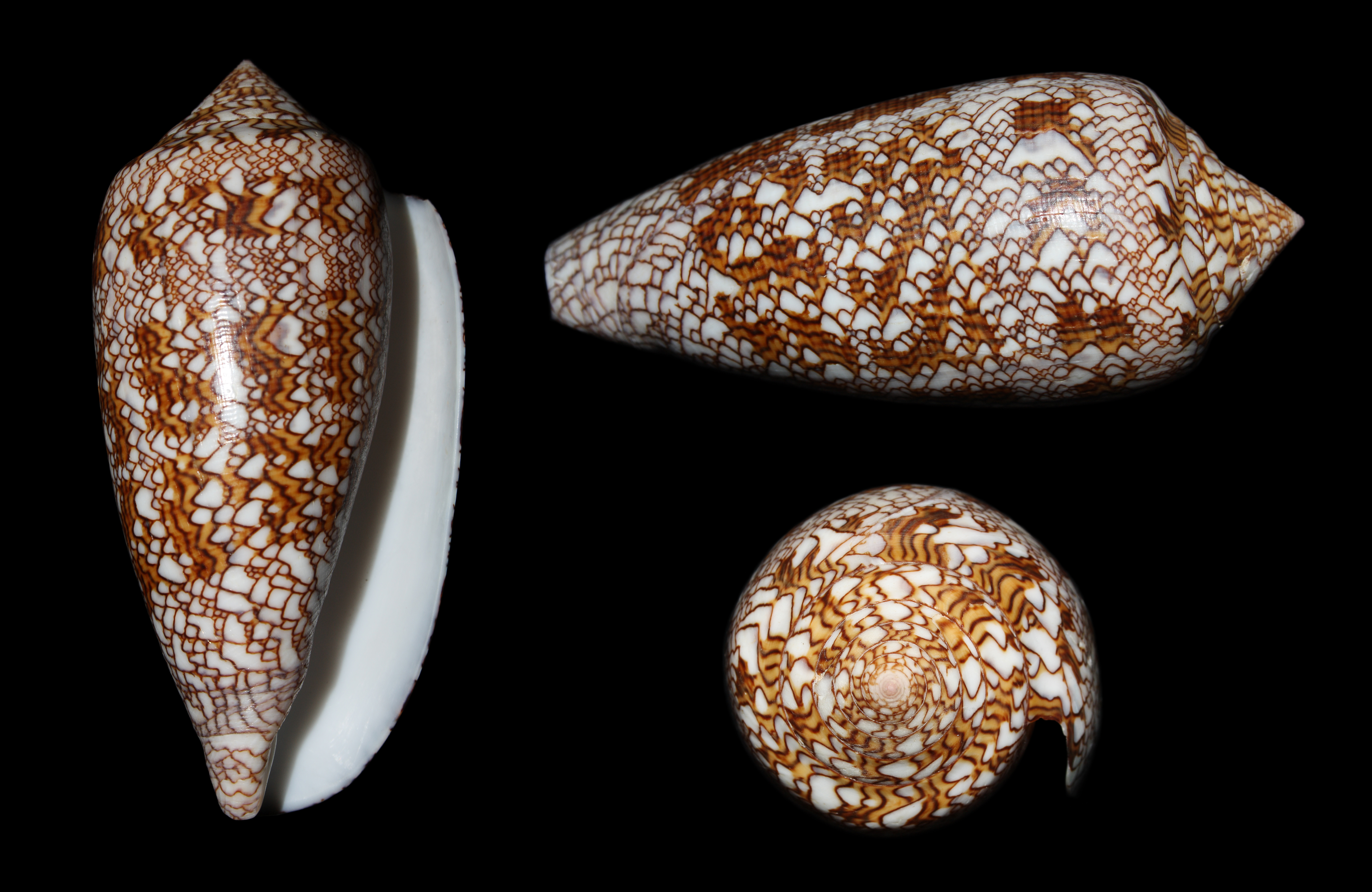The Textile Cone
The geometric patterns on sea
shells are one of the most intricate and colorful found anywhere in nature. The
Textile Cone sea snail for example is called the “Cloth of Gold” cone (above) for good reason. How did it come to be? What natural processes in the snail's development create such beauty?
The answer lies in the behavior of pigmentation cells on the mantle’s edge as the animal grows in size.
In effect, shell patterns are a recording of the neural activity in the snail's mantle
during growth.
We will skip the mathematical model describing neural activity in the mantle and go straight to the net observed effect. Pigmentation on the cells in the growing edge switch on (black) or off (white) based on the state of its three
neighbors (cell above left, above and above right)
These set of rules, when repeated over time, causes the following pattern to emerge on the shell:
Resultant pattern on the shell
The rule set described above belongs to a class of systems known as Cellular Automata (CA). CAs were first identified and described by John Von Neumann and Stanislaw Ulam in the 1940s and have since been observed in several fields including physics, biology, economics and sociology. Stephen Wolfram developed a classification scheme for CAs in his 2002 book A New Kind of Science.
The example described above is known as "Rule 30" Cellular Automaton. It's easy to see why it's "Rule 30" once we replace "On" and "Off" with 1s and 0s.

Rule 30
00011110 in binary = 30 in decimal. You can play with all possible combinations, from 00000000 to 11111111 (0 to 255 in decimal). Here are some interesting "rules" and patterns:

Cellular Automata Rules and Resulting Patterns
These patterns are classic examples of emergence. Emergence is the phenomenon by which entirely new properties or behavior arises from simple local interactions. In other words, the sum is greater than its parts.
Emergent systems are
characterized by irreducibility – the collective behavior cannot be reduced to
a single property or interaction. This is because in emergent
systems, causation is iterative i.e. the effects are also causes. For this reason
emergent behavior cannot be predicted mathematically. You’ll need to actually
run the experiment to learn the outcome.
Nature is full of emergent phenomenon– snow flakes, ant colonies, sand dunes, bird flock, even the weather.
Examples of Emergence in Nature
Are you an emergent phenomenon? the hundred billion cells in your brain somehow interact with each other to produce consciousness - with which you can read and understand this sentence. Amazing, isn't it?
References
1. Algorithmic Beauty of Sea Shells by Hans Meinhardt
2. Geometry and Pigmentation of Sea Shells by S. Coombes
3. A Model for Shell Patterns based on Neural Activity, Brad Ermentrout, The Veliger, April 1986








